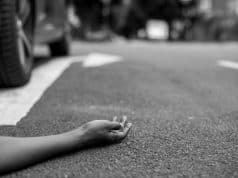
Pedestrian accidents can be overwhelming, leaving people confused about the next steps to take. Knowing what to do in the immediate aftermath is crucial for protecting your rights and ensuring proper care. This guide breaks down the essential actions to take if you or someone else is involved in a pedestrian accident, from seeking medical help to understanding legal options. Each step matters and can make a significant difference in the outcome of the situation.
1. Ensure Safety and Seek Medical Attention
The first and most important step is to make sure everyone involved is safe. If you are the pedestrian, try to move to a safer location away from traffic, but only if it’s safe to do so. For bystanders, checking if the pedestrian is conscious or breathing is critical. Emergency medical help should be called immediately, especially if the person is unconscious or seriously injured.
Why is this important? Even if injuries seem minor, hidden issues like internal bleeding or head trauma may not show up right away. A medical evaluation ensures that any hidden injuries are identified and treated early. In many cases, timely treatment can prevent complications from worsening. For instance, a pedestrian might only feel soreness after being hit but later discover a more severe injury without proper medical care.
2. Gather Information at the Scene
After ensuring that medical help is on the way, it’s important to collect as much information as possible from the scene. This includes the driver’s contact details, insurance information, vehicle license plate number, and the make and model of the car involved. If there were any witnesses, their contact information is also valuable as they can provide statements later on.
A common mistake people make is forgetting to document the scene properly, especially when emotions are running high. If possible, take photographs of the accident site, vehicle damage, any visible injuries, and the surrounding environment (like traffic signs or road conditions). These can be used later as evidence if needed for an insurance claim or legal case.
3. Understand Your Legal Options
Pedestrian accidents can lead to complicated legal situations, especially if the driver was at fault or if the injuries are severe. In these cases, looking for a personal injury attorney specializing in claims is a wise step. They will help you understand your rights, determine if you’re entitled to compensation, and guide you through the legal process if necessary.
Legal representation is especially important if the insurance company disputes your pedestrian accident claim or offers a low settlement. Lawyers can negotiate on your behalf, ensuring that you receive fair compensation for your injuries and losses. In cases of negligence or reckless driving, additional damages may be awarded to cover pain and suffering.
4. Report the Accident to Authorities
In many places, it is mandatory to report any traffic accident, especially when there is an injury involved. When the police arrive, they will create an official accident report. This document can be vital if there are any disputes about fault later on. Make sure to provide an accurate and detailed account of what happened. If possible, request a copy of the report for your records.
Filing a police report is more than a legal requirement. It also strengthens your position when dealing with insurance companies or legal cases. Without it, the other party may dispute the events, making it harder to prove your pedestrian accident case.
5. Notify Your Insurance Company
Many people believe that insurance only applies to drivers, but pedestrians should also notify their insurance companies. If you have health insurance or personal injury protection (PIP) coverage, you may be entitled to compensation for medical expenses. Additionally, some auto insurance policies cover pedestrians involved in accidents.
Contacting your insurance company promptly is key, as they will guide you through the claim process. Be sure to provide them with all relevant details, including the police report number, driver’s insurance information, and medical records. This step ensures that you’re financially covered for any medical treatments or lost wages resulting from the accident.
6. Keep Detailed Records
Maintaining thorough records of the accident and its aftermath is essential for protecting your rights. This includes keeping copies of medical bills, reports from doctors, police reports, communication with insurance companies, and any receipts for accident-related expenses.
Why is this so important? When filing a claim or seeking compensation, these documents serve as evidence of the accident’s impact on your life. They can show the financial burden caused by medical treatments, missed work, and other accident-related costs.
7. Focus on Recovery
After dealing with the immediate aftermath of the accident, the focus should be on healing. Recovery can take time, both physically and mentally. Following medical advice, attending follow-up appointments, and seeking therapy or counseling can help during this time.

Recovery doesn’t just mean healing from physical injuries. Many pedestrians experience trauma after an accident, making it important to seek mental health support if needed. The process might seem long, but with the right care, both physical and emotional recovery is possible.
Conclusion
Being involved in a pedestrian accident is a traumatic experience, but knowing what to do afterward can make all the difference. From ensuring immediate safety and seeking medical help to understanding your legal rights, every step plays a role in protecting yourself and your future. By gathering evidence, notifying the proper authorities, and focusing on recovery, you can navigate this difficult time with greater ease.





